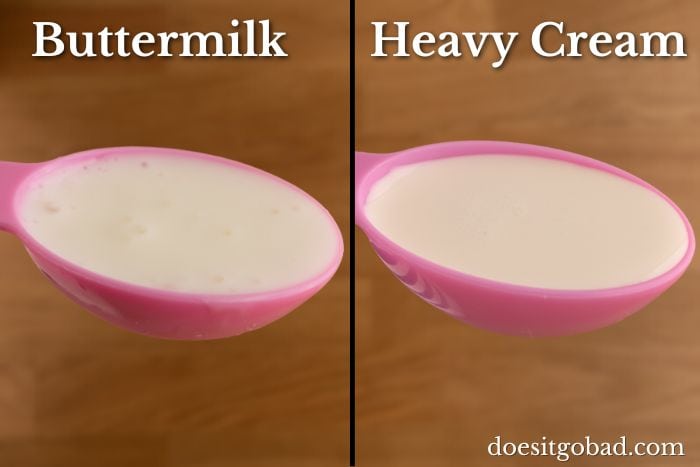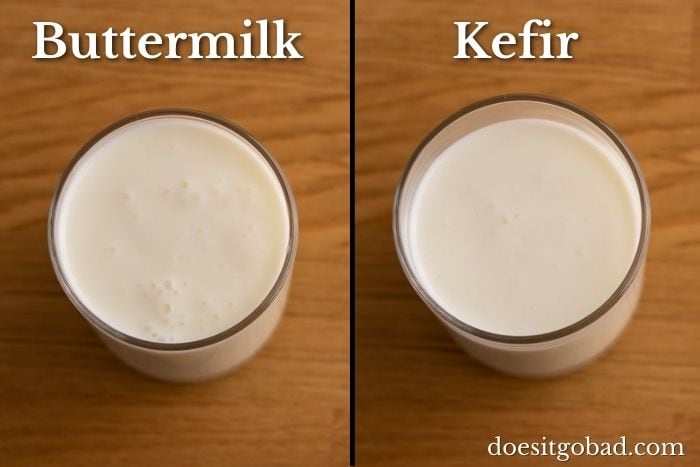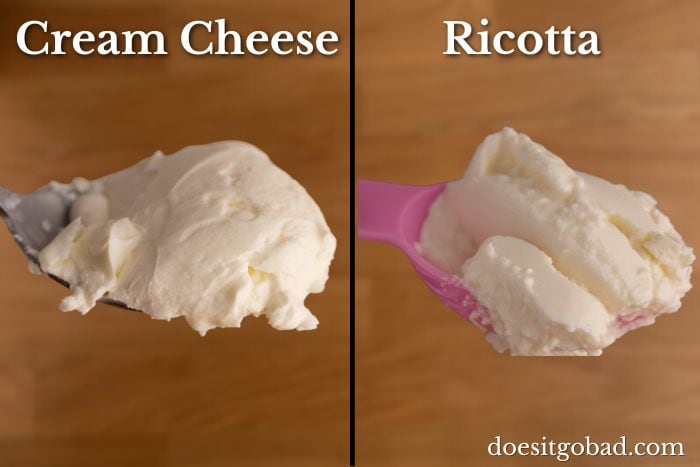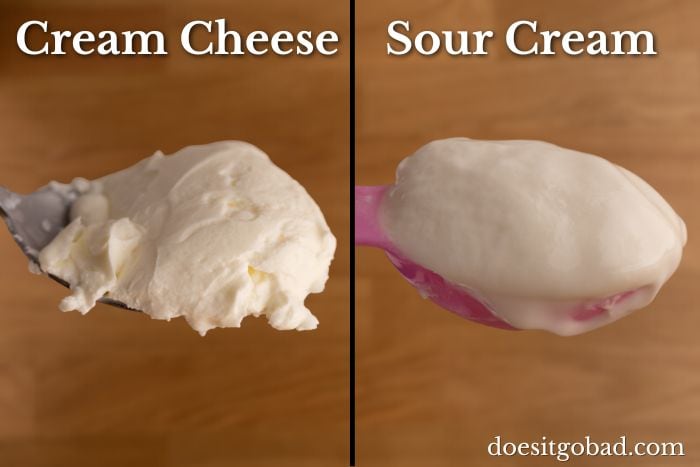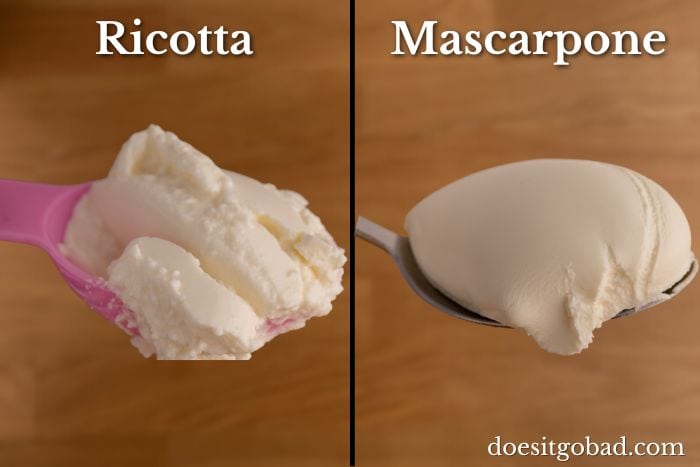Mascarpone vs. Cream Cheese: Differences and When to Sub
Here’s all about the similarities and differences between mascarpone and cream cheese. Learn whether they are the same thing and if you can substitute one for the other.
So a recipe calls for mascarpone cheese, and you can’t quite find it in the grocery store. But based on the photos or video, it kind of looks like cream cheese.
That makes you wonder: are cream cheese and mascarpone the same? And if not, can you substitute one with the other?
Let’s jump right in.
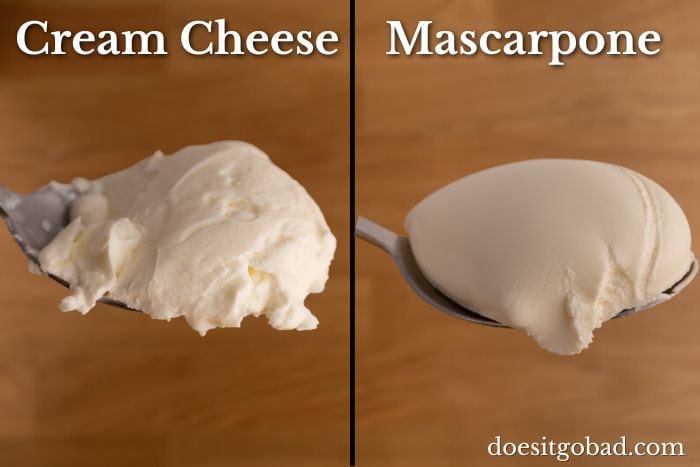
Is Mascarpone and Cream Cheese The Same?
Mascarpone is an Italian cream cheese, but it’s noticeably different from the American cream cheese you use to slather on bagels.
Both are fresh and creamy, but mascarpone is noticeably richer thanks to its higher fat content. And it tastes sweeter than “regular” cream cheese.
In other words, mascarpone and cream cheese aren’t one and the same. They have slightly different textures and flavors, so they aren’t direct substitutes, either.
That’s the overview. We’ll dive deeper into the differences and similarities later in the article.
For now, let’s talk about subbing one for the other.
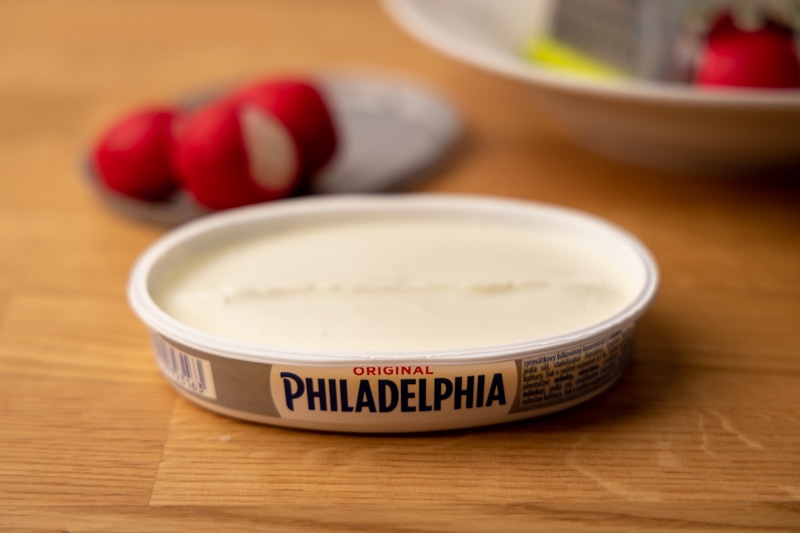
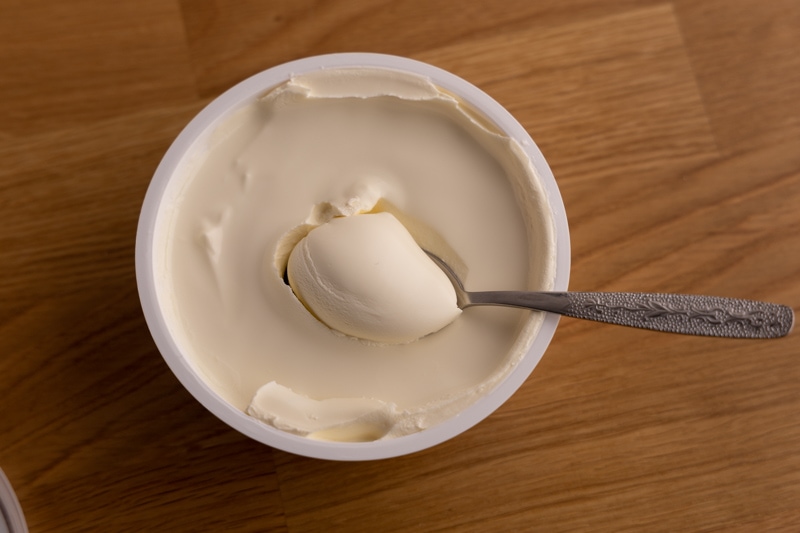
When to Substitute
Even though mascarpone is a type of cream cheese, it’s quite different from “regular” cream cheese, which makes substituting one for the other quite tricky and, in some contexts, impossible.
Let’s jump into the details.
Can I Use Cream Cheese Instead of Mascarpone?
You can combine 1/4 cup of heavy cream per cup of cream cheese using a mixer for a rough mascarpone substitute. That mixture should be quite similar to mascarpone in taste and texture, and you can add half a teaspoon of powdered sugar if you need it sweeter.
It’s far from an ideal substitute but should work okay in toppings, frostings, and desserts.
Fortunately, there’s a better way to go about subbing cream cheese for mascarpone. And it’s as simple as it gets: finding a similar recipe that uses cream cheese instead of mascarpone.
For instance, say you want to make tiramisu, probably the most popular dessert that uses mascarpone. If you google a phrase like “tiramisu with cream cheese,” you’ll find recipes that use cream cheese instead. Here’s an example.
Or you can check out other recipes for the same dish, as some will likely mention substitutes for mascarpone. Like this one.
Those recipes typically ask you to combine cream cheese with a bit of sugar, whip some cream on the side, and gently fold it into the sweetened cream cheese.
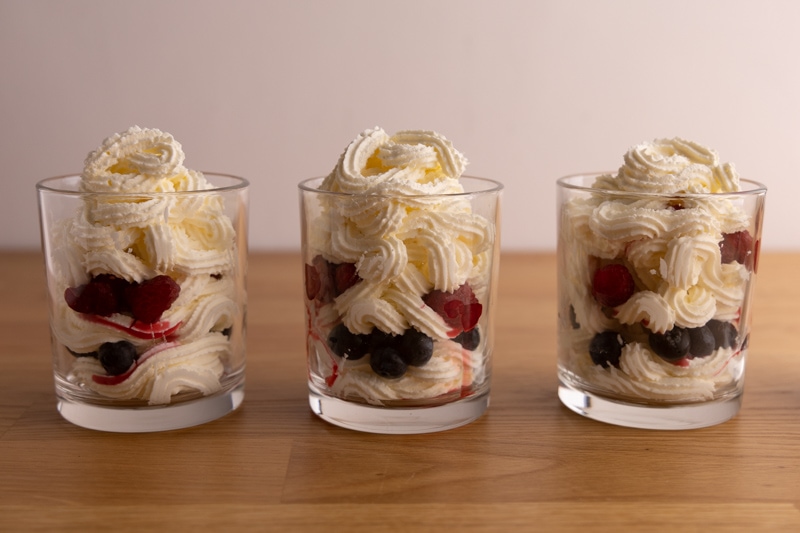
And in the case of mascarpone vs. cream cheese, using an alternative recipe is a much better approach than going with a generic substitute formula I outlined above.
That’s because each recipe is different. In some of them, whipping the cream will be a must, while in others, not so much. The same with the amount of sugar added, and so on.
In other words, it’s better to go with an okay recipe that you have the correct ingredients for than with a great recipe that you’re forced to go with makeshift mascarpone. At least in this case.
And in case you’re wondering, ricotta is an even worse substitute for mascarpone.
Can I Substitute Mascarpone for Cream Cheese?
You can use an equal amount of mascarpone, add a pinch of salt, and mix in a spritz of lemon juice to make a rough cream cheese substitute. The mixture will be a bit sweeter and creamier than cream cheese, but it should work okay in cooked and baked dishes.
If you need it to be a bit sturdier, you can mix in a tiny amount of flour until you get the texture right. Just make sure you’re adding it bit by bit and stirring well to avoid clumping.
In general, mascarpone is somewhat sweet and lacks the tang that cream cheese provides. So while you can make it tangier by incorporating lemon juice and a bit of salt, that sweetness will still be noticeable.
Because of that, the mentioned substitution should work well in baked goods and desserts. It likely won’t work nearly as well in savory salads, spreads, dips, etc. In other words, use mascarpone instead of cream cheese only in recipes where mascarpone would be a natural fit.
And, instead of making the substitute mixture, it’s probably better to adjust other ingredients so that there’s a bit more salt and acid that mascarpone lacks.
As usual, it’s best to sub mascarpone for cream cheese only in recipes you know the ins and outs of. This way, you should have a rough idea of how much extra salt or tang you need for the recipe to turn out well.
If you’re cooking something for the first time, you better wait until you have regular cream cheese on hand.
Alternatively, you can go the same route I described for subbing cream cheese for mascarpone: find a similar recipe that uses mascarpone instead of cream cheese. It shouldn’t be an issue for many baked goods and desserts, but it won’t be nearly as simple for spreads, dips, and casseroles.
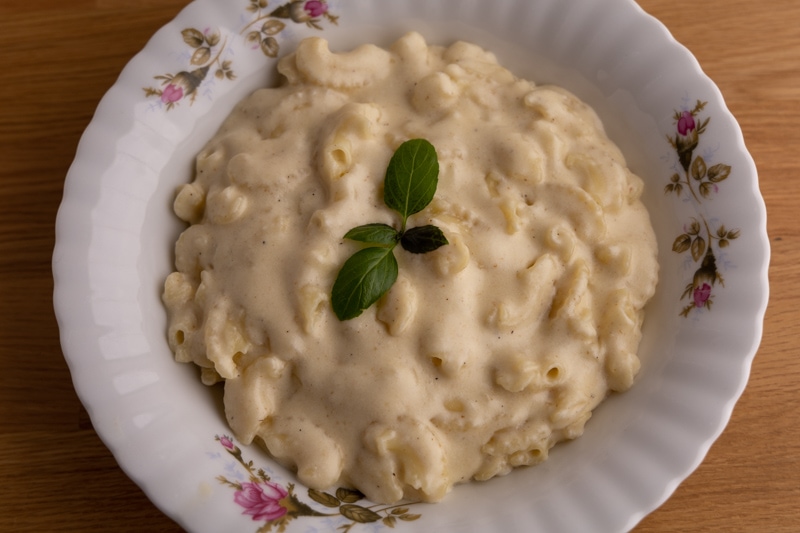
Mascarpone vs. Cream Cheese: Differences and Similarities
While mascarpone is a type of cream cheese, there are many differences between mascarpone and regular cream cheese.
Below, I divided all the basics on cream cheese vs. mascarpone into a few sections so that it’s easy to find what you’re looking for.
Taste and Texture
While both cream cheese and mascarpone are creamy and spreadable, that’s where the similarities end. Here’s how they compare visually:
Thanks to its much higher fat content, mascarpone has a noticeably richer texture and signature silky consistency. In comparison, cream cheese isn’t nearly as rich and is a bit sturdier than its Italian cousin.
Taste-wise, mascarpone has a sweet but mild taste, making it a natural fit for all sorts of cake frostings, toppings, desserts, and other sweet stuff. Cream cheese, on the other hand, has a mild but slightly tangy flavor, which makes it a great option for both savory and sweet (after adding sugar) dishes.
In short, mascarpone is like a sweeter and richer variety of cream cheese that lacks the tang of its cousin.
Because of these differences, mascarpone and cream cheese aren’t direct substitutions. And using one instead of the other requires extra ingredients to balance out the flavor and texture.
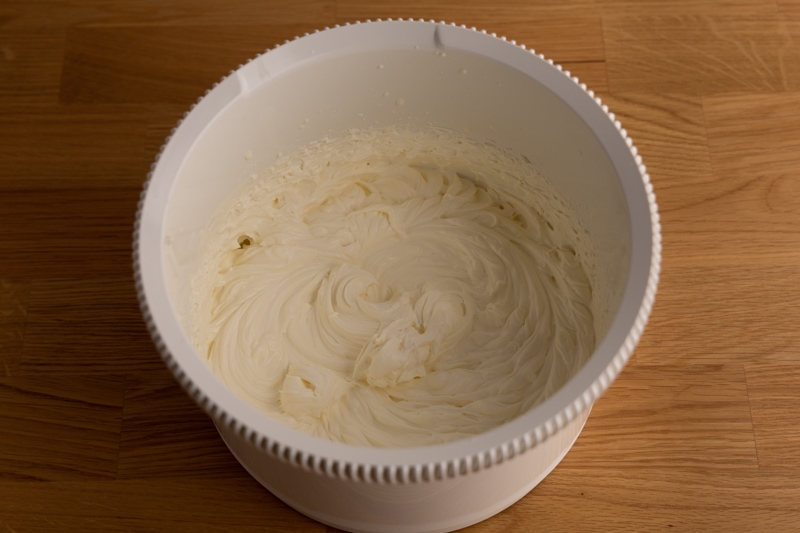
Uses
| Mascarpone | Cream cheese |
|---|---|
| Tiramisu | Spreading on bread, rolls, bagels, toasts |
| Cake frostings and toppings | Creamy salads, spreads, and dips |
| Desserts with fruits | Cake icing and frosting |
| Casseroles like lasagna, mac & cheese | Adding richness and creaminess to soups |
| Tarts and pies | Casseroles |
Thanks to its sweet flavor, mascarpone is primarily used in sweet dishes, be it tiramisu, desserts with fruits, cake frostings, toppings, and the like. Sometimes it finds its way to a casserole, like a lasagna, but it’s not a typical ingredient in savory recipes.
Regular cream cheese, thanks to its tangy yet mild taste, is used more broadly. It tastes great on its own if you slather it on bread or bagels, makes spreads, dips, and soups creamy, and works wonders in cake icings and frostings with a bit of sugar and maybe heavy cream added.
In other words, cream cheese is much more versatile than its Italian counterpart.
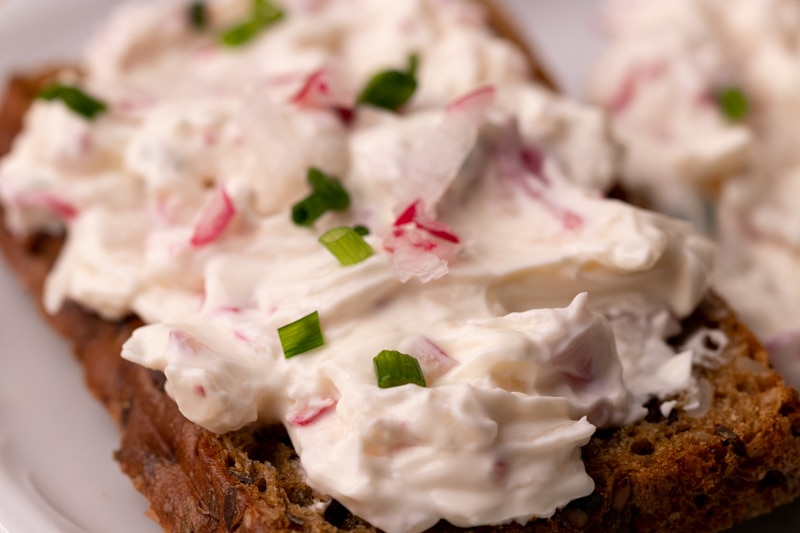
Of course, If you’re looking for that silky sweet mascarpone flavor, subbing it with cream cheese mixed with some heavy cream will be a subpar experience at best. But if you’re mixing that with a bunch of other ingredients anyway, going with that substitute shouldn’t be that big of a deal.
Things are more difficult the other way around, as it’s probably impossible to mute mascarpone’s sweet taste without a significant change in overall flavor. That’s why I recommend playing to its strengths and using it only in sweet dishes.
And if you need a savory sandwich spread or want to thicken a spread or dip, stick with cream cheese.
Sour cream might be a decent cream cheese substitute in soups and dips. The texture is different, but it’s tangy and creamy, which is what’s usually needed.
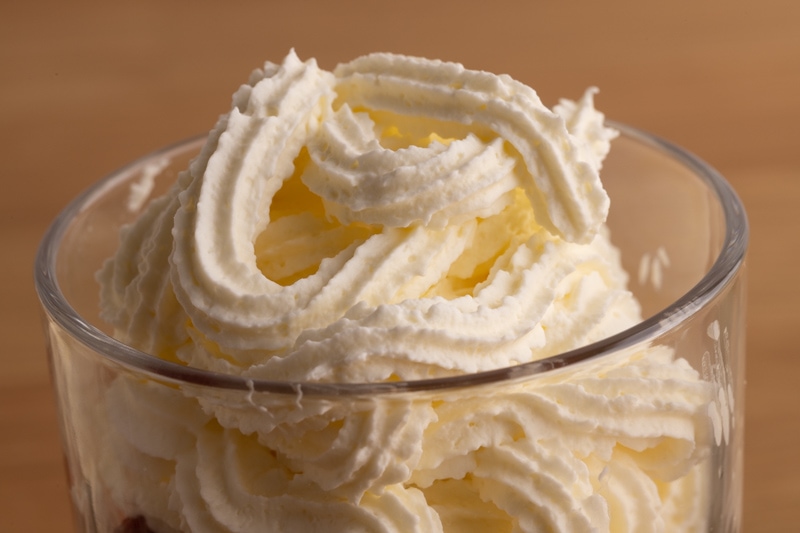
Nutrition
The macronutrient profiles of mascarpone and cream cheese are noticeably different. Here’s what they look like (per 100g):
| (per 100g) | Mascarpone [source] | Cream cheese [source] |
|---|---|---|
| Energy | 400 kcal | 343 kcal |
| Protein | 3.33g | 5.79g |
| Fat | 40g | 33.5g |
| Carbohydrates | 3.33g | 4.56g |
The crucial difference between mascarpone and cream cheese in terms of nutrition profile is the amount of fat.
While cream cheese has 33 percent of fat or a bit more, mascarpone has at least 40 percent of fat, and often more than 50 percent. That makes it a much more calorie-dense option than regular cream cheese.
There are also some minor differences in how much carbs and proteins are in both types of cheese, but these are negligible compared to the difference in fat content.
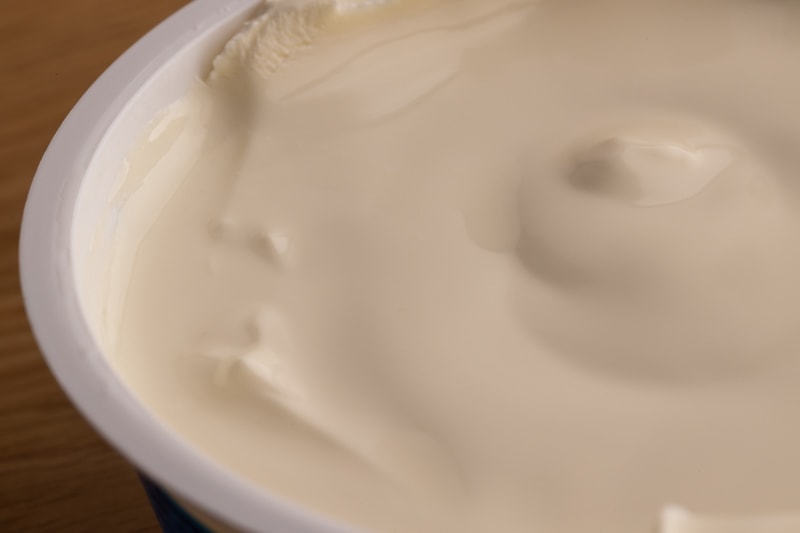
If you’d like to reduce your fat intake, you can choose a light variety of cream cheese that has about half the fat the regular version has. But last time I checked, there’s no “light” mascarpone available.
Overall, both are packed with calories, so if you’re looking to limit your caloric intake or watch your calories, I suggest you control the portion sizes of both. It’s easy to overeat on these, given the deliciousness of both cream cheese and mascarpone.
Production
While mascarpone is a type of cream cheese, the production processes of both cream cheese and mascarpone have some differences.
In both cases, it starts with cream or a combination of milk and cream. And since mascarpone contains much more fat, it uses higher-fat cream.
The next step is when it’s different for both dairy products.
When making cream cheese, the milk and cream mixture is fermented using lactic acid bacteria. The bacteria thicken the mix and make it a bit sour and tangy.
(That’s what makes cream cheese taste the way it does.)
When making mascarpone, instead of lactic acid bacteria, there’s an acidity regulator involved, such as cream of tartar, citric acid, or lemon juice. That regulator helps thicken the mixture.
(Lack of fermentation makes mascarpone a mildly sweet cheese that doesn’t have the tanginess of cream cheese.)
Now that the mixtures are thickened, both are strained to separate the whey from the curd. And that resulting curd is what makes up the cheese.
That’s the high-level comparison of the production process of mascarpone vs. cream cheese.
The processes described above are the standards for making mascarpone and cream cheese. But these aren’t the only possibilities out there, so don’t be surprised if you find a dairy that uses a slightly different process.
Rotten Records: Share Your Snap!
Caught some food past its prime? Upload your photo to “Rotten Records” and help others spot the signs of spoilage. Every image makes our food community safer and more informed!
